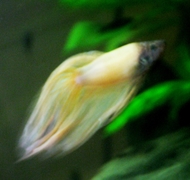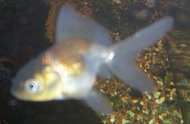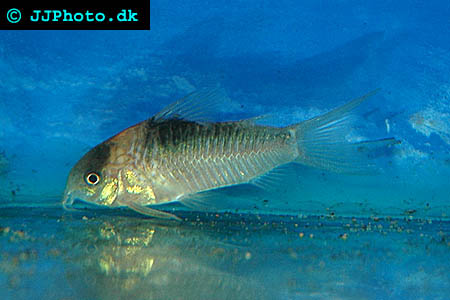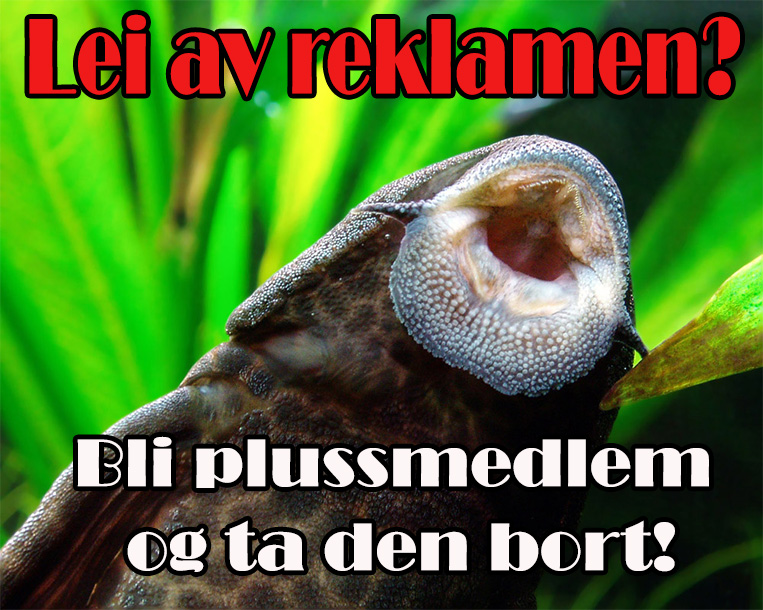Fisk med armer og bein?
Hei... Så dette bildet på internett idag... Er dette ekte eller er det bare kødd??
Postet 25.10.07 kl 18:43
Inaktiv bruker

det lurer jeg på og --hehe
Postet 25.10.07 kl 18:48
Postet 25.10.07 kl 18:50
Endret: 25.10.07 kl 18:51
Postet 25.10.07 kl 18:50
Det er ikke en fisk, men en type salamander, og bildet er ekte.
Postet 25.10.07 kl 18:51
Inaktiv bruker

lærte noe nytt igjen..
Postet 25.10.07 kl 18:55
Postet 25.10.07 kl 18:55
Postet 25.10.07 kl 21:47
Postet 25.10.07 kl 21:55
Endret: 25.10.07 kl 21:58
Postet 25.10.07 kl 22:27
Odd EspenHåper du tuller?:p Du viste vel h*n et bilde av en palettciklide, så h*n ikke går å trur det enda?
Jeg tuller ikke. Jeg forsøkte å forklare at "det var det definitivt ikke". Men jeg hadde ikke noe bilde for hånden. Dessuten var jeg allerede trett og oppgitt over at de holdt grønn kulefisk i ferskvann. Massevis av grønn kulefisk i én tank. En av dem var tydelig syk. Og er det noe som virkelig står mitt hjerte nære, så er det kuler. Jeg gitt tilbake dagen etter, i håp om å treffe noen mer fornuftige der. Dessverre var ikke det tilfelle. Dagen etter var nemlig eieren der... Jeg har ikke satt mine ben i den dyrebutikken siden (og den ligger bare 5 minutters gange unna der jeg bor).
Postet 25.10.07 kl 22:36
Om dere hadde tiitet lengere ned på siden hadde dere fått svar på spm :
"Commentary:
These and similar photographs circulate via email and are often posted to blogs and online forums for discussion. The intriguing little creature depicted in the photographs is commonly misidentified as a "legged fish" or a "fish with legs and hands". Some postulate that the images are actually fakes created in an image manipulation program.
In fact, the photographs are genuine, although they do not depict a fish. This creature is an Axolotl or "Mexican Walking Fish". The Axolotl is an amphibian, more specifically, a salamander. Although they are native to Mexico, Axolotls have become popular as exotic pets around the world. In captivity, they are housed in an aquarium and can have a range of colours.
Like some other kinds of amphibians, the Axolotl generally remains permanently in its larval form. According to axolotl.org:
Ordinarily, amphibians undergo metamorphosis from egg to larva (the tadpole in frogs is a larva), and finally to adult form. The Axolotl, along with a number of other amphibians, remains in its larval form throughout its life. This means that it retains its gills and fins, and it doesn't develop the protruding eyes, eyelids and characteristics of other adult salamanders.
Although there is no mystery or manipulation involved, these photographs certainly depict a fascinating little animal. "
"Commentary:
These and similar photographs circulate via email and are often posted to blogs and online forums for discussion. The intriguing little creature depicted in the photographs is commonly misidentified as a "legged fish" or a "fish with legs and hands". Some postulate that the images are actually fakes created in an image manipulation program.
In fact, the photographs are genuine, although they do not depict a fish. This creature is an Axolotl or "Mexican Walking Fish". The Axolotl is an amphibian, more specifically, a salamander. Although they are native to Mexico, Axolotls have become popular as exotic pets around the world. In captivity, they are housed in an aquarium and can have a range of colours.
Like some other kinds of amphibians, the Axolotl generally remains permanently in its larval form. According to axolotl.org:
Ordinarily, amphibians undergo metamorphosis from egg to larva (the tadpole in frogs is a larva), and finally to adult form. The Axolotl, along with a number of other amphibians, remains in its larval form throughout its life. This means that it retains its gills and fins, and it doesn't develop the protruding eyes, eyelids and characteristics of other adult salamanders.
Although there is no mystery or manipulation involved, these photographs certainly depict a fascinating little animal. "
Postet 26.10.07 kl 21:24







